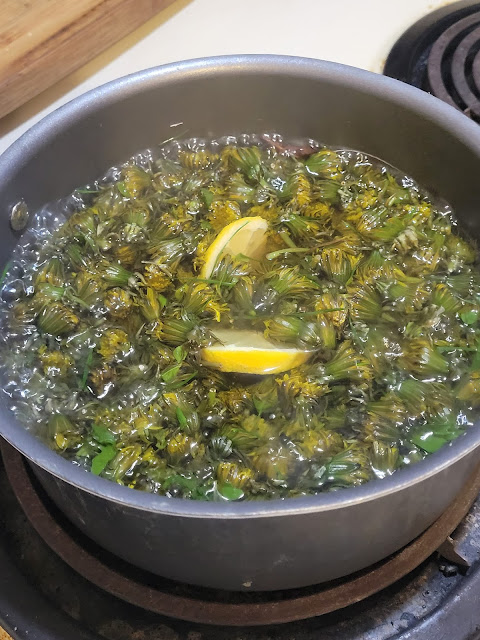Among the bountiful harvest of fruits, there's one that often goes unnoticed—the humble crabapple.
While small in size, these tart and vibrant fruits possess a unique flavor that can be transformed into a delightful beverage: crabapple juice. In this article, we'll delve into the process of making homemade crabapple juice, exploring its tangy and refreshing qualities. Get ready to discover a new way to enjoy this often overlooked fruit.
The Beauty of Crabapples:
Crabapples, a close relative of the regular apple, are small fruits that come in a variety of colors, including red, yellow, and green. Although they may not be suitable for eating raw due to their tartness, they are perfect for making juice. Crabapples are known for their high pectin content, which gives the juice a naturally thick and velvety texture.
Selecting and Preparing the Crabapples:
To make delicious crabapple juice, start by selecting fresh and ripe crabapples. Look for fruits that are firm and free from blemishes. Rinse them under cool water to remove any dirt or debris. If desired, you can remove the stems and blossom ends before proceeding with the juicing process.
Extracting the Juice:
There are several methods for extracting juice from crabapples. One common approach is to use a juicer specifically designed for fruits. Simply feed the crabapples through the juicer, and it will separate the juice from the pulp and skins. Another method involves boiling the crabapples with water until they become soft and pulpy. Once softened, strain the mixture through a fine-mesh sieve or cheesecloth to extract the juice while leaving behind any solids.
Enhancing the Flavor:
Crabapple juice has a naturally tangy and tart flavor, which can be balanced with sweeteners to suit your taste preferences. Consider adding a touch of honey, sugar, or a natural sweetener like maple syrup to enhance the flavor profile. You can also experiment with incorporating other complementary flavors, such as a hint of cinnamon or a squeeze of lemon juice, to add depth and complexity to the juice.
Chilling and Serving:
Once you've extracted the juice and adjusted the sweetness, it's time to chill and serve your homemade crabapple juice. Pour the juice into a glass pitcher and refrigerate it for a few hours to allow it to become cold and refreshing. When ready to serve, pour the chilled juice into glasses filled with ice cubes. Garnish with a slice of fresh crabapple or a sprig of mint for an added touch of elegance.
Crabapple juice offers a delightful and tangy alternative to traditional fruit juices. By harnessing the unique flavors of these small and vibrant fruits, you can create a refreshing beverage that tantalizes the taste buds. Whether enjoyed on its own or used as a base for creative mocktails and cocktails, homemade crabapple juice is a testament to the wonderful possibilities that lie within often overlooked fruits. So, embrace the tartness, savor the flavor, and indulge in the refreshing goodness of homemade crabapple juice.
Recipe: Homemade Crabapple Juice
Ingredients:
- - 4 cups fresh crabapples
- - Water
- - Sweetener of your choice (honey, sugar, maple syrup), to taste
- - Optional: cinnamon, lemon juice
- - Ice cubes
- - Fresh crabapple slices or mint sprigs for garnish
Instructions:
1. Rinse the fresh crabapples under cool water to remove any dirt or debris.
2. Place the crabapples in a large pot and add enough water to cover them.
3. Bring the pot to a boil over medium heat, then reduce the heat and let the crabapples simmer until they become soft and pulpy.
4. Once the crabapples have softened, strain the mixture through a fine-mesh sieve or cheesecloth, extracting the juice while leaving behind any solids.
5. Measure the extracted juice and return it to the pot. Add water if needed to adjust the consistency.
6. Stir in the sweetener of your choice, starting with a small amount and gradually adding more until you reach your desired level of sweetness.
7. For additional flavors, you can add a pinch of cinnamon or a squeeze of lemon juice. Adjust these according to your taste preferences.
8. Transfer the crabapple juice to a glass pitcher and refrigerate for a few hours until thoroughly chilled.
9. When ready to serve, fill glasses with ice cubes and pour the chilled crabapple juice over the ice.
10. Garnish with fresh crabapple slices or mint sprigs for an extra touch of visual appeal.
11. Enjoy the tangy and refreshing flavors of homemade crabapple juice!
Note: The sweetness of crabapples can vary, so feel free to adjust the amount of sweetener and additional flavors to suit your taste.






















Comments